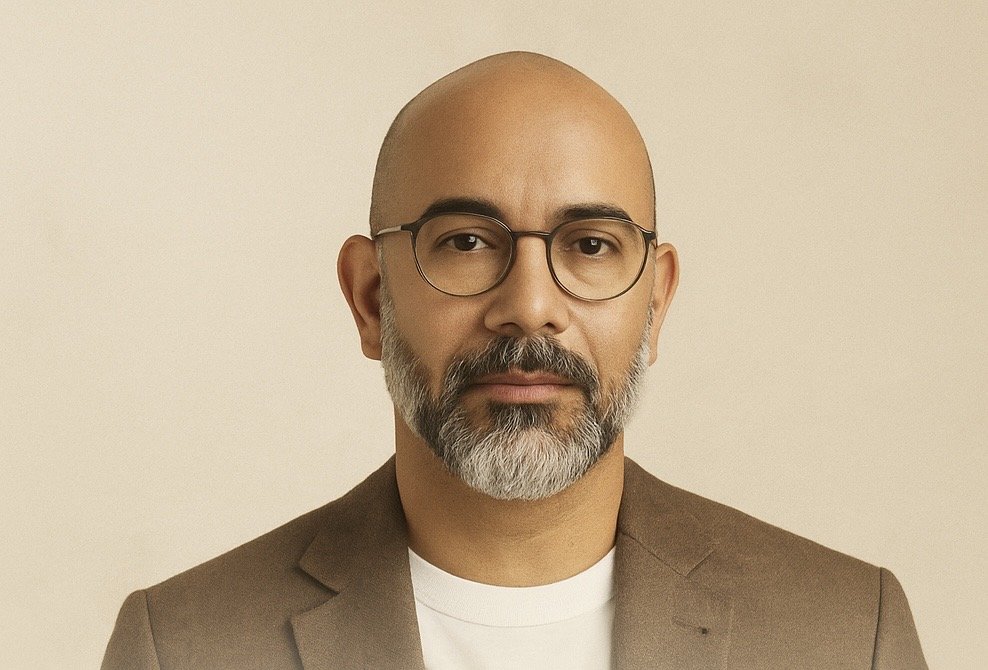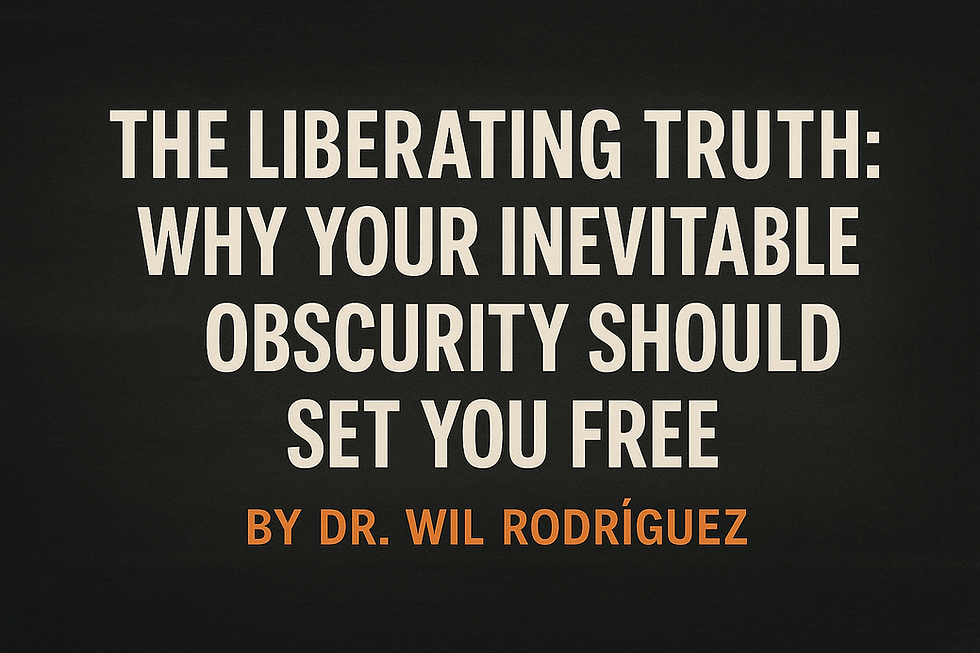Beyond Borrowed Spaces: Why Building a Native Community Is a Strategic Act of Ownership
- Dr. Wil Rodriguez

- 5 hours ago
- 6 min read
By Dr. Wil Rodríguez
TOCSIN Magazine

The Illusion of Belonging
In today’s digital ecosystem, every brand wants a community. “Build your tribe,” “grow your followers,” “create engagement”—the slogans are everywhere. But most companies aren’t actually building communities; they’re borrowing them. They gather people inside rented spaces like Discord, Reddit, or Slack, mistaking presence for belonging and activity for alignment.
This dependency has created a silent paradox. While organizations speak about authenticity and ownership, they often operate in environments they don’t control. Their most valuable asset—human connection—is hosted on someone else’s infrastructure. The paradox is profound: a company can have thousands of members yet own none of the relationships that sustain it.
A native community, on the other hand, is an act of sovereignty. It is a decision to cultivate connection within your own walls, guided by your own values, designed around your own mission. It transforms community-building from a marketing initiative into a form of stewardship—an intentional architecture of belonging.
The Borrowed Platform Paradigm: Convenience at a Cost
Borrowed platforms are tempting because they are frictionless. They come with features, visibility, and users already familiar with the system. Launch a Discord server or subreddit, and within hours you can have a crowd. But what looks like community is often a simulation of intimacy—a fast-flowing stream of conversation without a riverbed of meaning.
The problem is not the tool; it’s the ownership model. When your community lives on an external platform, you are always a guest. You operate under someone else’s algorithm, someone else’s rules, and someone else’s data policy. Your insights, engagement metrics, and even your members’ identities exist inside another company’s ecosystem.
That dynamic introduces fragility.
A policy update can erase access. A change in interface can alter behavior. A moderation shift can undermine your tone. Worse, your members begin to associate more with the platform than with you. The loyalty migrates upward—from your brand to the tool hosting it.
Borrowed platforms are like rented apartments: convenient, flexible, but never truly yours. They can host life, but they cannot build legacy.
The Rise of Native Communities: Cultivating Ownership and Identity
A native community is not just a space—it’s a mirror of your company’s consciousness. It represents how your organization understands human connection, learning, and culture.
When an organization creates a native space—whether integrated within its app, website, or ecosystem—it is reclaiming authorship. It is designing not only how people interact, but why. The architecture of that space carries intention: every button, every channel, every event is an extension of the brand’s purpose.
The result is a slower, deeper kind of growth.
Members are not just “joining” a group—they’re entering a culture. They sense coherence, tone, and direction. They don’t simply consume information; they help shape the narrative of the brand itself.
And over time, this sense of authorship changes everything. Engagement becomes participation. Feedback becomes co-creation. Customers become collaborators. The company stops speaking to the community and starts speaking with it.
Autonomy as the Foundation of Trust
Autonomy doesn’t mean isolation—it means integrity.
A native community allows you to set your own rhythms of interaction. You decide what matters most: quality of dialogue, depth of reflection, or speed of innovation. Unlike external platforms that reward noise and reaction, a native environment can prioritize meaningful slowness—the kind that fosters real learning and shared growth.
When members engage inside a space that your organization fully owns, they experience a sense of psychological safety. They know that their voices won’t be lost in algorithmic chaos or drowned out by external interference. That trust becomes the foundation of long-term loyalty.
In the future of digital leadership, trust will be the new currency, and native communities are the most stable vaults for it.
The Strategic Advantage of Ownership
A native community is not just a communication tool—it is a strategic organism. It grows with the company, learns from its members, and evolves with its mission.
Here are the dimensions that make it invaluable:
Cultural Continuity – Culture doesn’t survive on borrowed ground. A native community preserves tone, values, and purpose even through leadership transitions. It ensures that “how we do things here” remains coherent.
Data Integrity – You can measure genuine participation, emotional resonance, and behavioral change, not just clicks or likes. This allows for evidence-based culture design.
Innovation Loops – Feedback becomes faster, more nuanced, and actionable. You can experiment, adapt, and co-create with your community without external interference.
Resilience – When global systems change or platforms fail, your ecosystem remains intact. You own your audience, your conversations, and your culture.
In essence, a native community turns community-building from marketing noise into relational intelligence. It becomes your company’s internal nervous system—a feedback structure that keeps the organization alive, adaptive, and human.
From Communication to Communion
Most online communities communicate; very few commune. The difference is spiritual, not technological. Communication exchanges information. Communion exchanges meaning.
When a community is native, conversations slow down. Reflection deepens. Patterns of mutual recognition appear. Members see themselves not as followers but as participants in a shared vision.
This transition— from communication to communion—represents the highest evolution of digital leadership. It’s where human connection stops being a KPI and becomes a shared purpose.
For companies driven by impact, this is not optional; it’s existential.
Communion is the antidote to digital fragmentation. It’s how brands stop performing authenticity and start embodying it.
The Economic and Emotional ROI of Native Communities
There is an emotional economy at play in every community. Time, attention, and trust are the currencies.
External platforms often convert these currencies into metrics that serve the platform owner, not the organization. Native communities, however, internalize the cycle—transforming attention into alignment and alignment into innovation.
The return on investment is exponential:
Reduced churn, because members feel seen.
Stronger advocacy, because people protect what they helped create.
Better recruitment and retention, as the community becomes a talent magnet.
Increased lifetime value, not because of aggressive sales funnels, but because of emotional continuity.
And beyond financial ROI, there’s something more profound: the emotional sustainability of leadership. In native ecosystems, leaders can re-engage with purpose, not performance. The noise fades, and clarity returns.
Ethics, Privacy, and the Future of Human Connection
Native communities also invite an ethical reawakening.
When you own your environment, you own your responsibility. You can build systems that respect privacy, foster transparency, and protect members from exploitation.
This is the opposite of surveillance capitalism.
It’s what I call relational capitalism—a model where relationships are the true assets, and respect is the medium of exchange.
As artificial intelligence, automation, and data analytics accelerate, companies that ground their communities in ethical, human-centered ecosystems will emerge as beacons of trust. They will not only survive disruption; they will define the standards for digital citizenship.
From Borrowed Attention to Collective Belonging
The companies that thrive in the next decade will be those that shift their mindset from audience acquisition to community cultivation.
Owning your space is no longer a luxury—it’s a necessity.
Because when you rent your space, you borrow engagement.
When you build your own, you cultivate belonging.
Belonging, unlike engagement, cannot be manufactured. It must be grown—patiently, intentionally, and with design that reflects humanity. That is the art and science of community leadership in the digital age.
Conclusion: Building with Intention, Leading with Presence
To build a native community is to make a philosophical statement:
We are responsible for the worlds we create.
It requires patience instead of virality, stewardship instead of management, and presence instead of performance. But those who take this path end up with something far more valuable than numbers—they build movements.
In an age where everything can be copied, community is the last frontier of originality.
The future will belong to organizations that understand this truth and act upon it—not as marketers, but as architects of connection.
Reflection Box
Borrowed platforms give you audience.
Native communities give you identity.
Ask yourself:
Are you merely managing conversations—or are you building a culture?
Are you measuring clicks—or nurturing coherence?
Are you renting attention—or creating belonging?
The companies that answer these questions with intention are not just shaping markets.
They are shaping the next evolution of human connection itself.
Visit TOCSIN Magazine for more reflections on leadership, digital ethics, and the architecture of conscious connection.







Comments